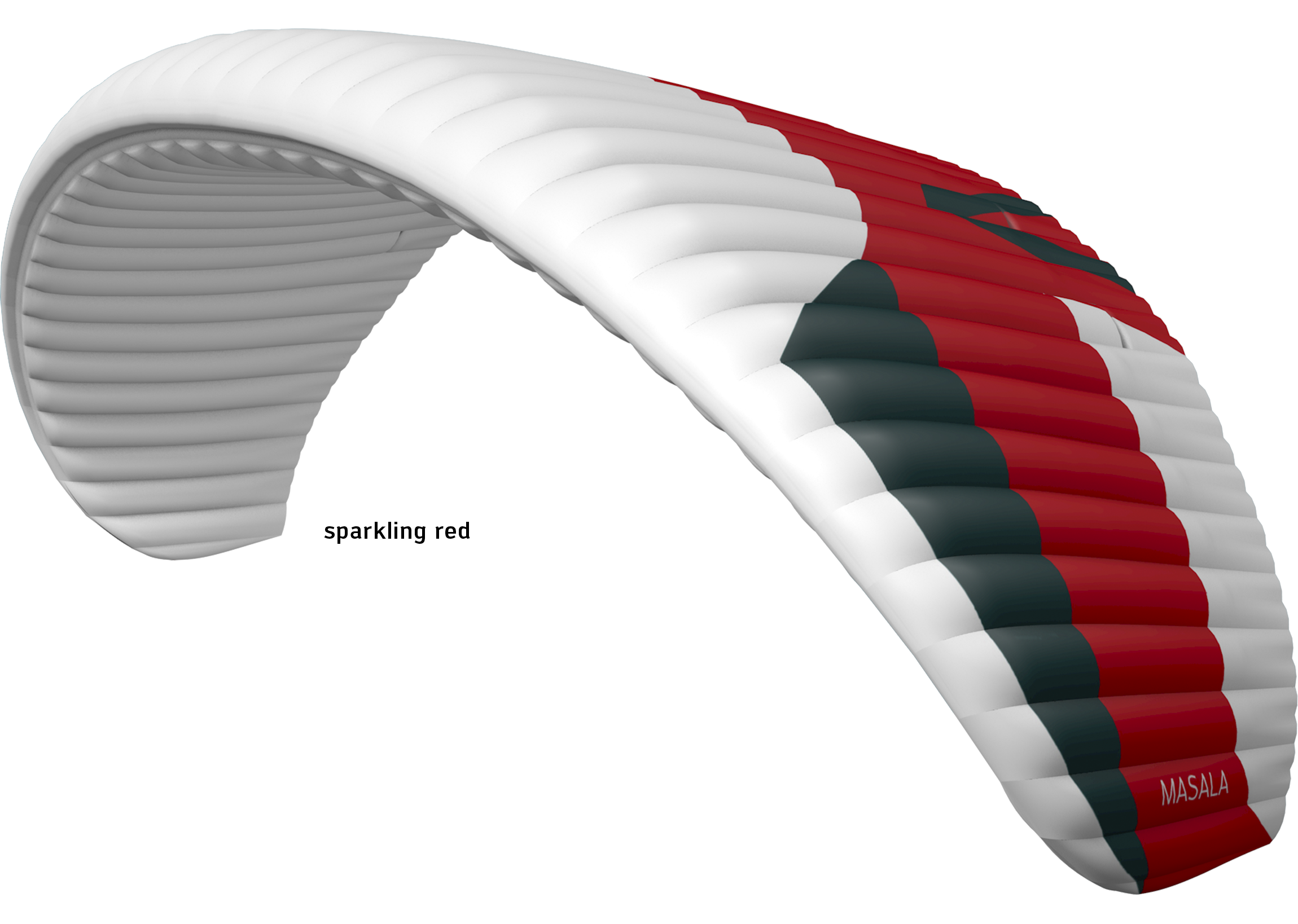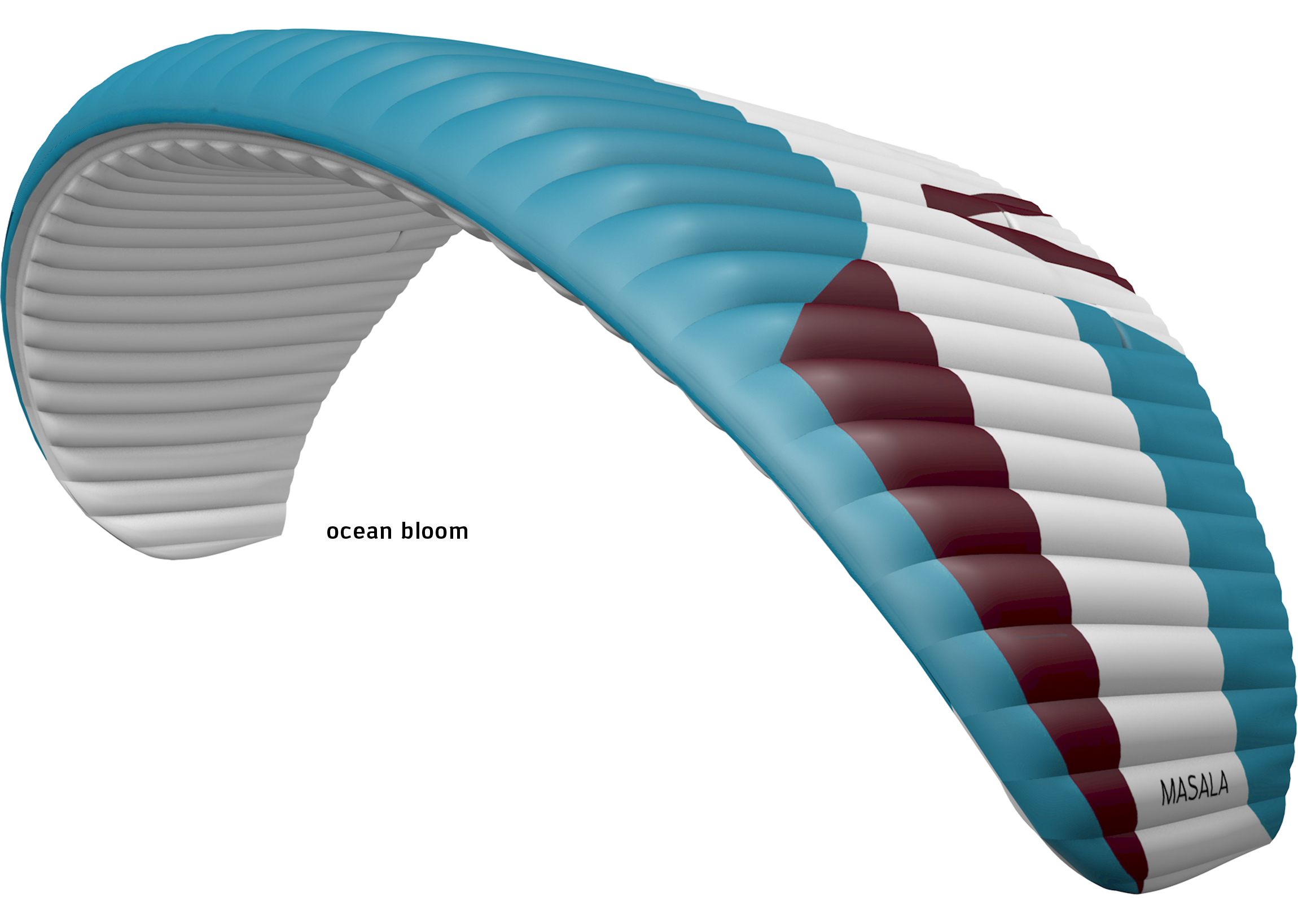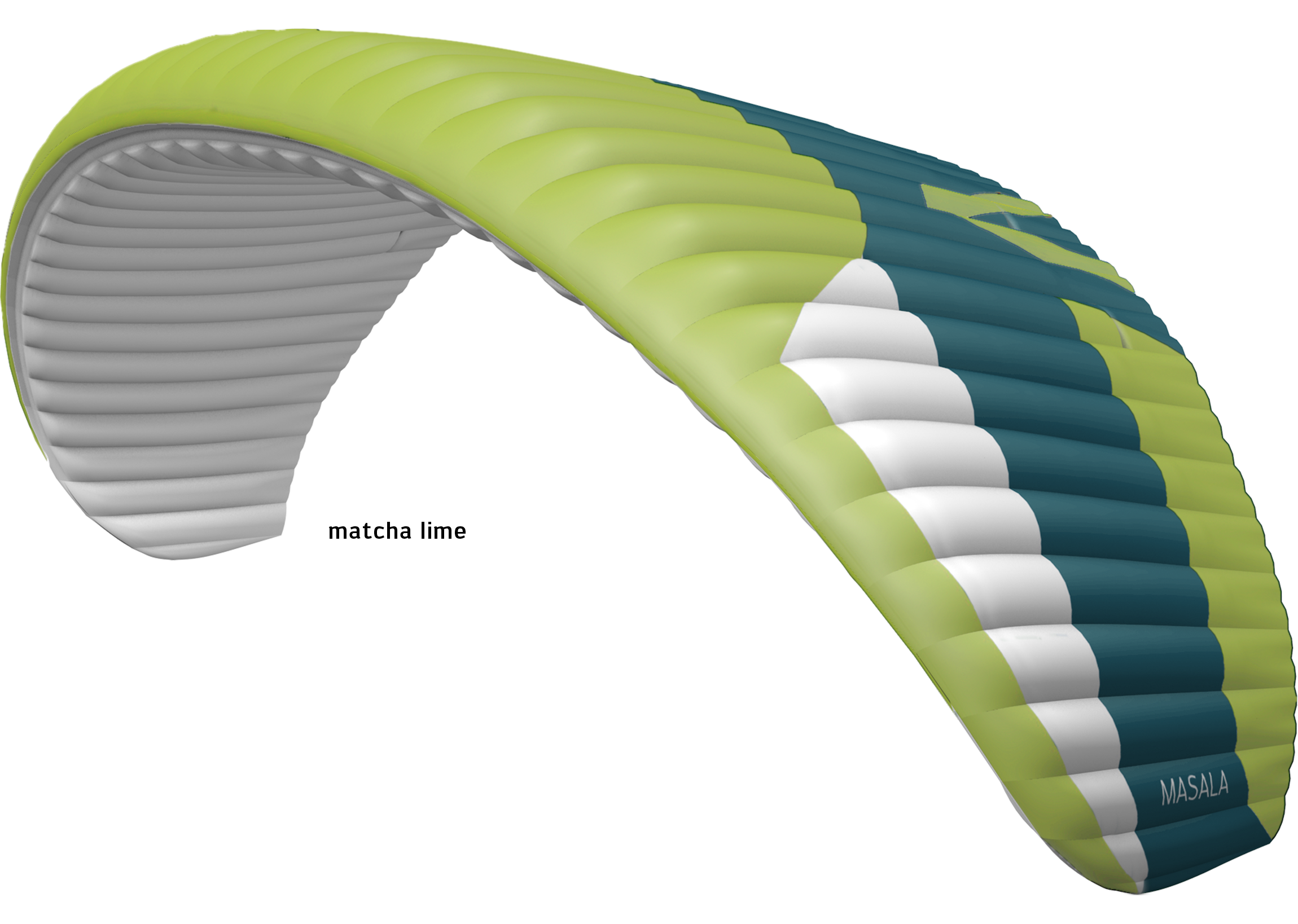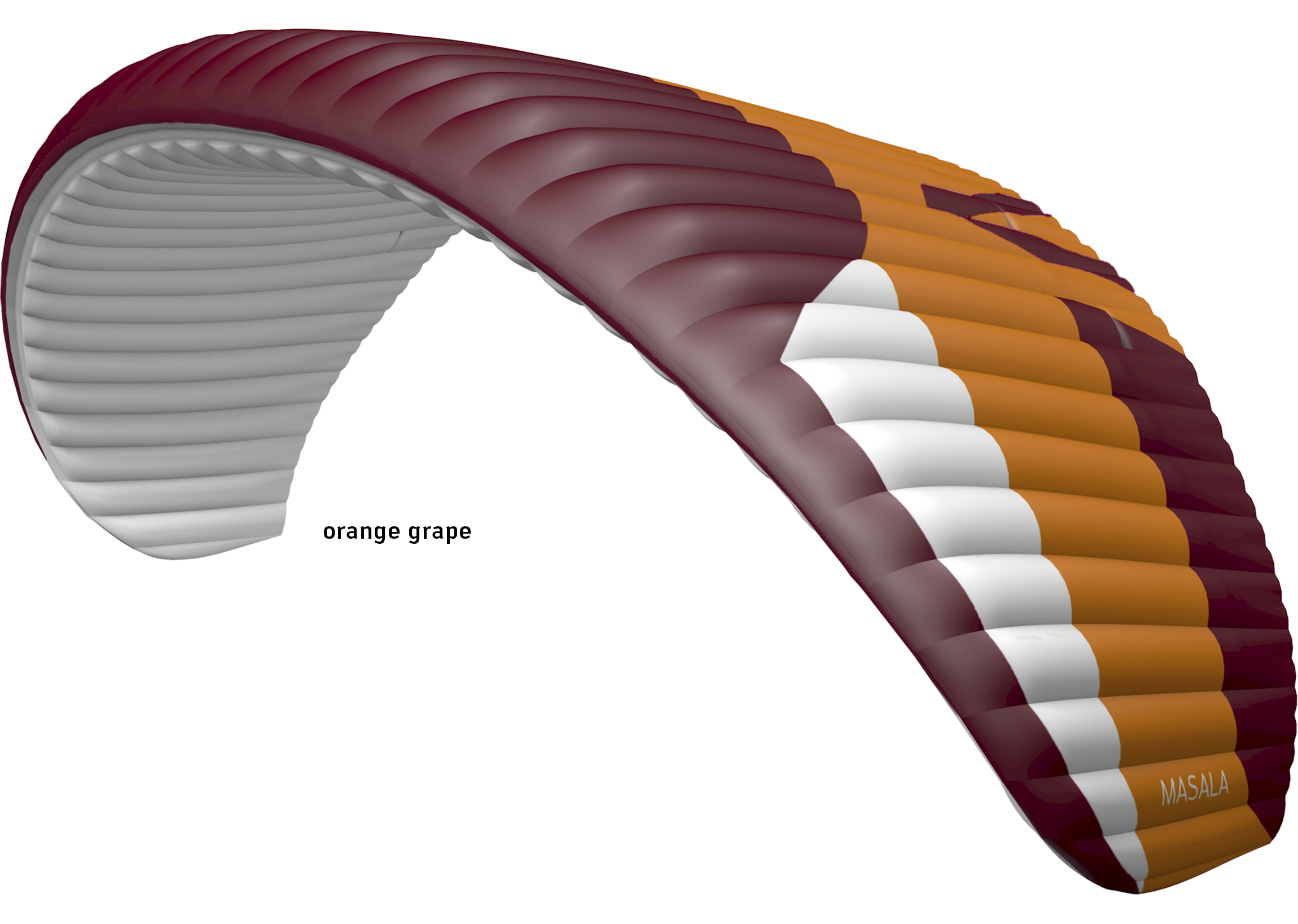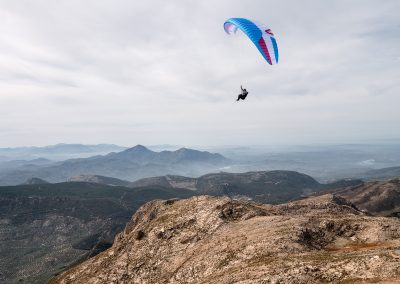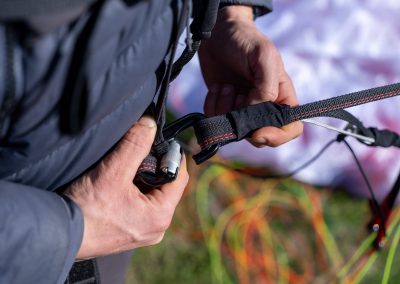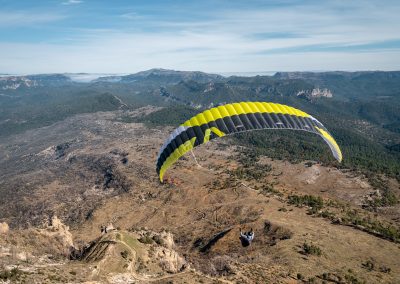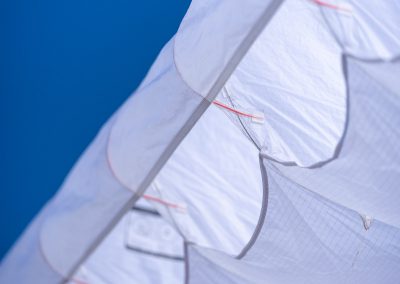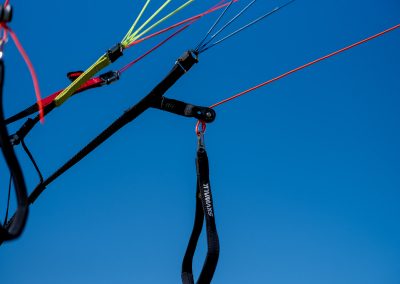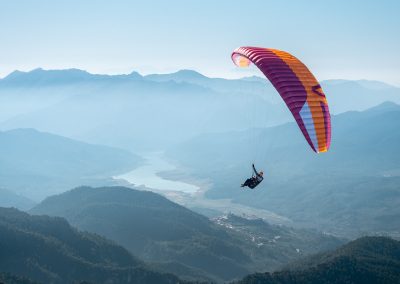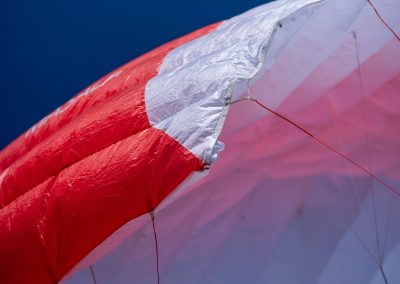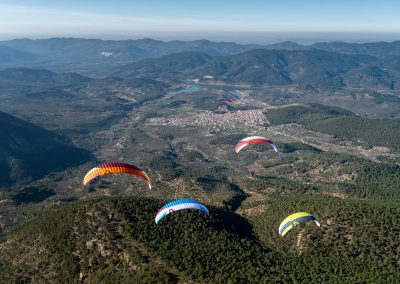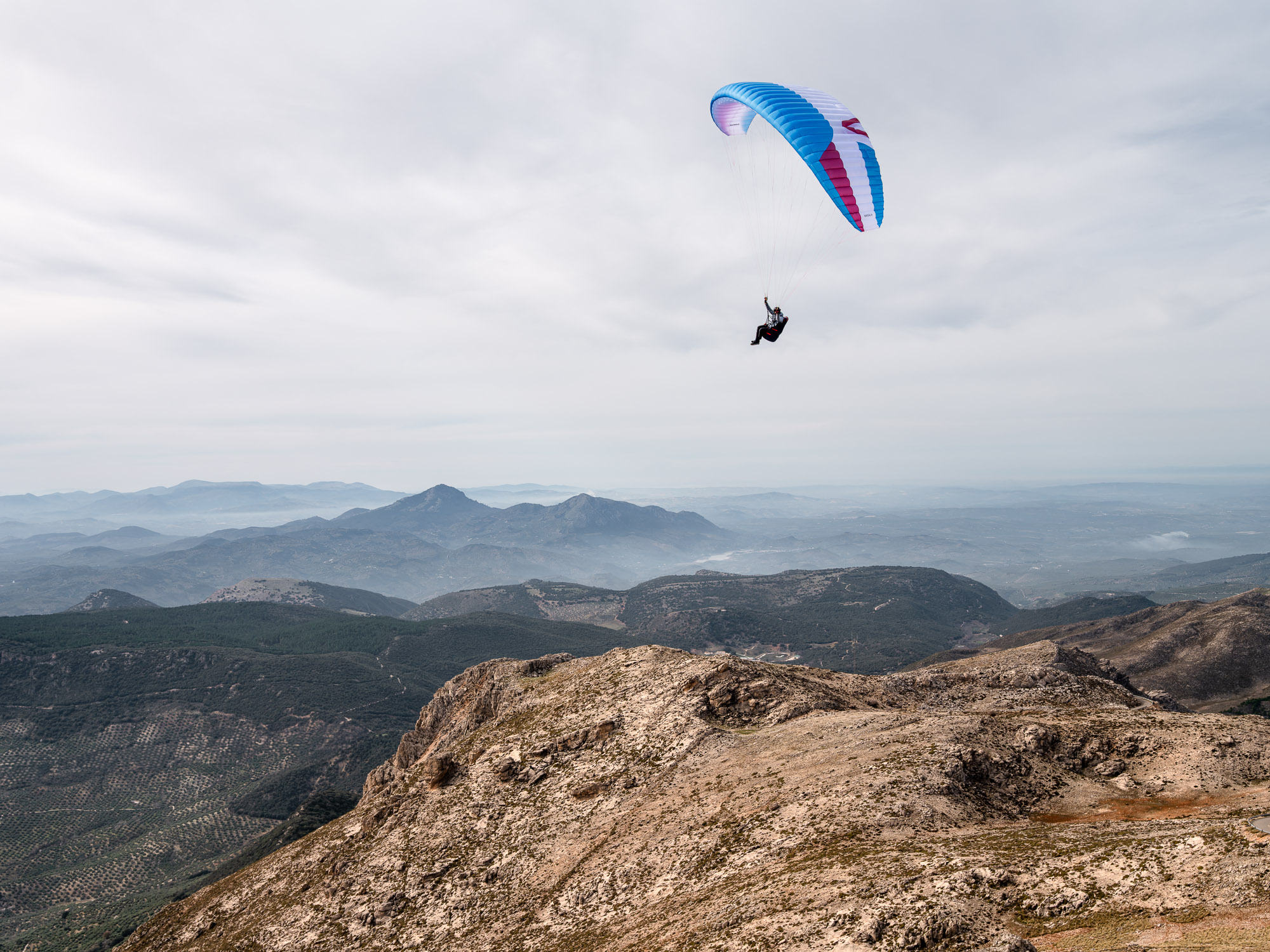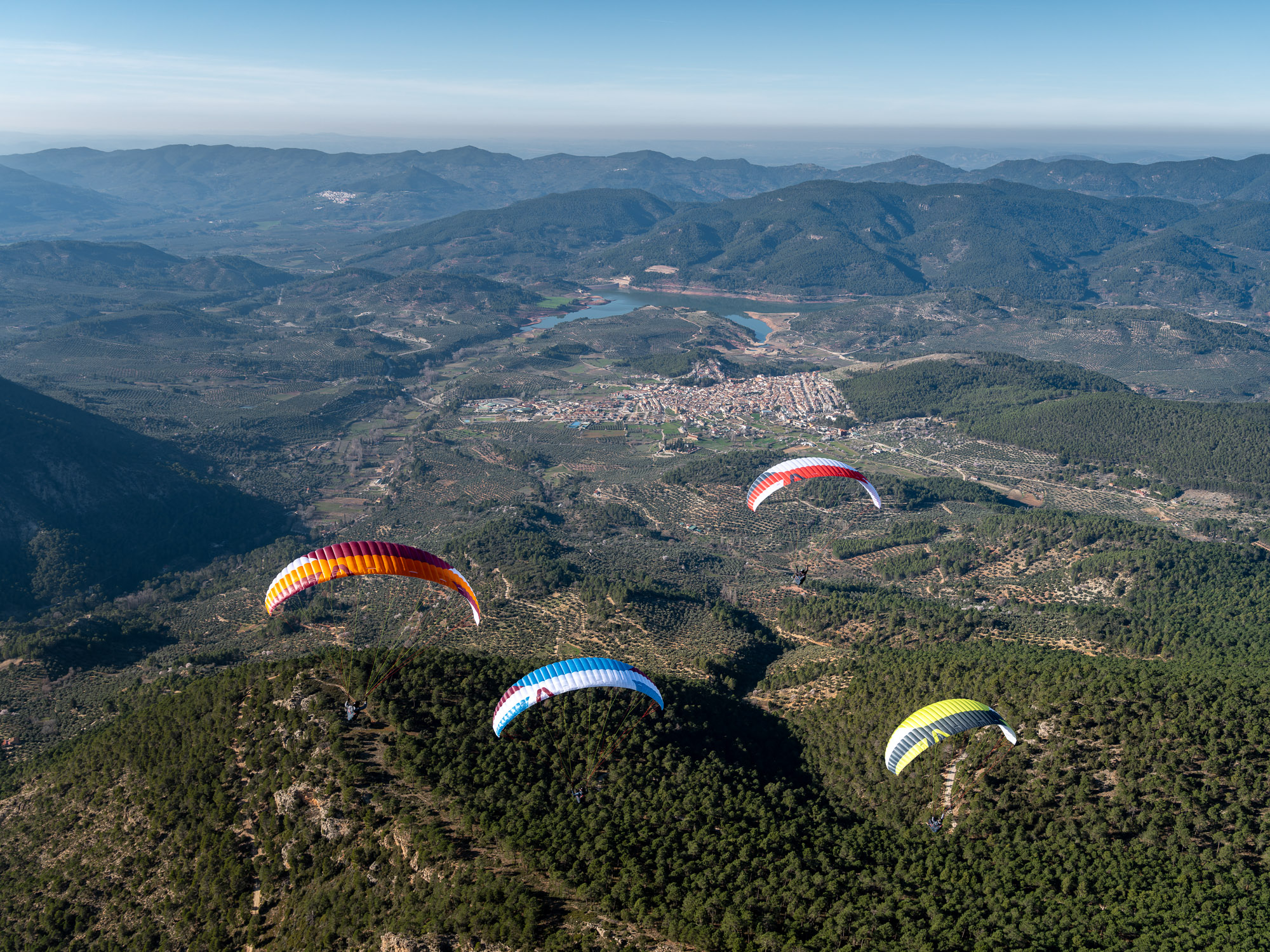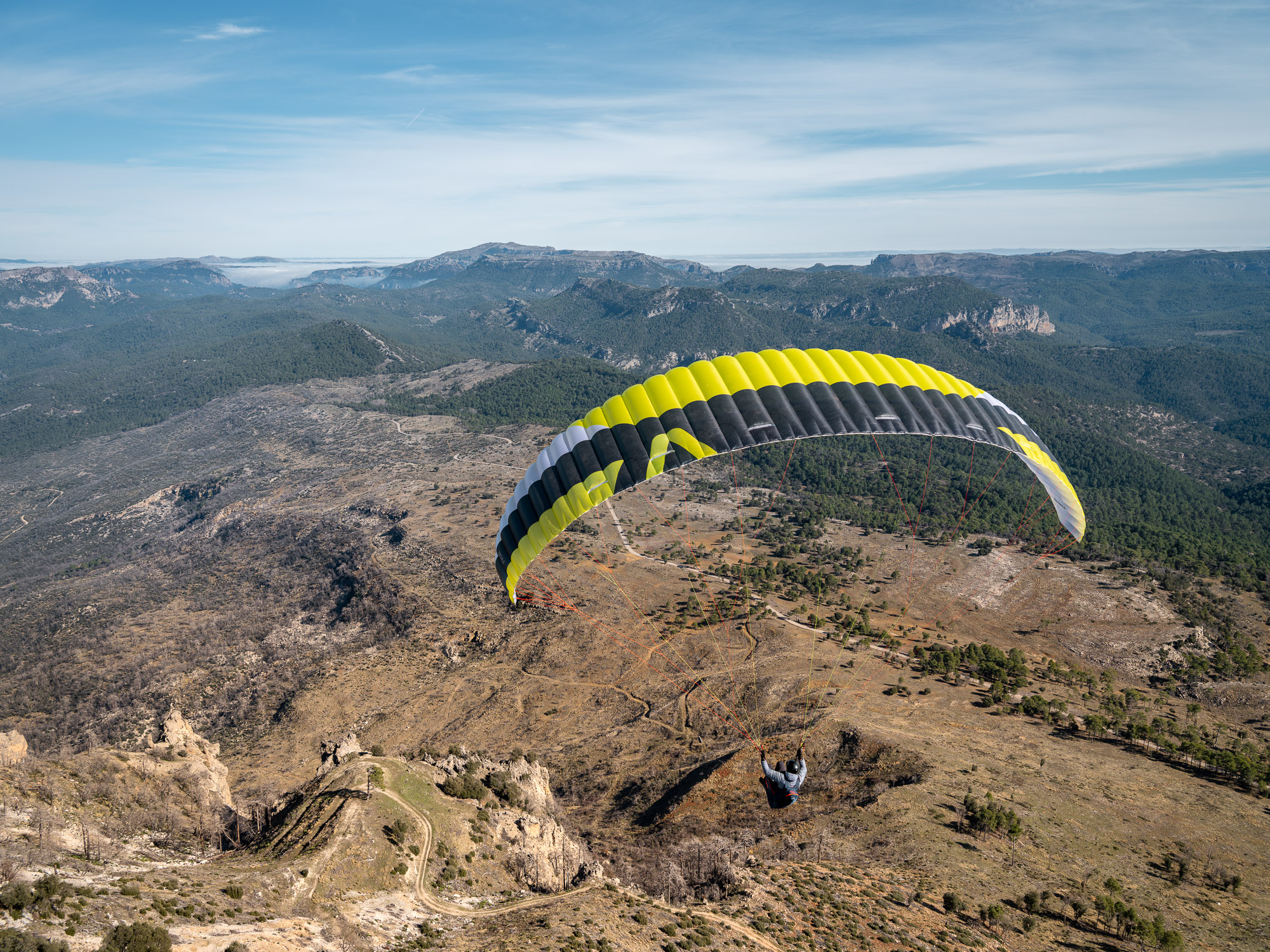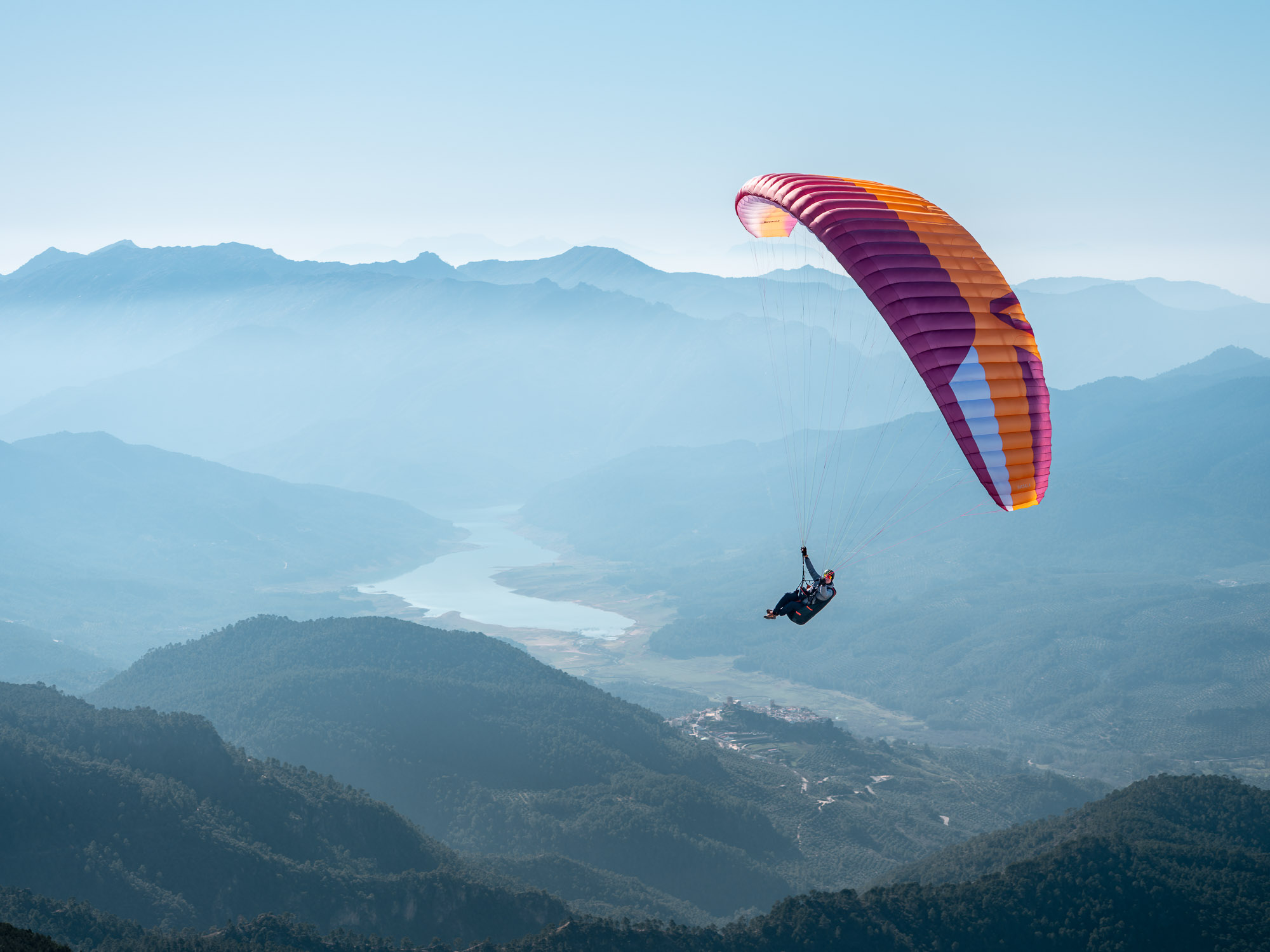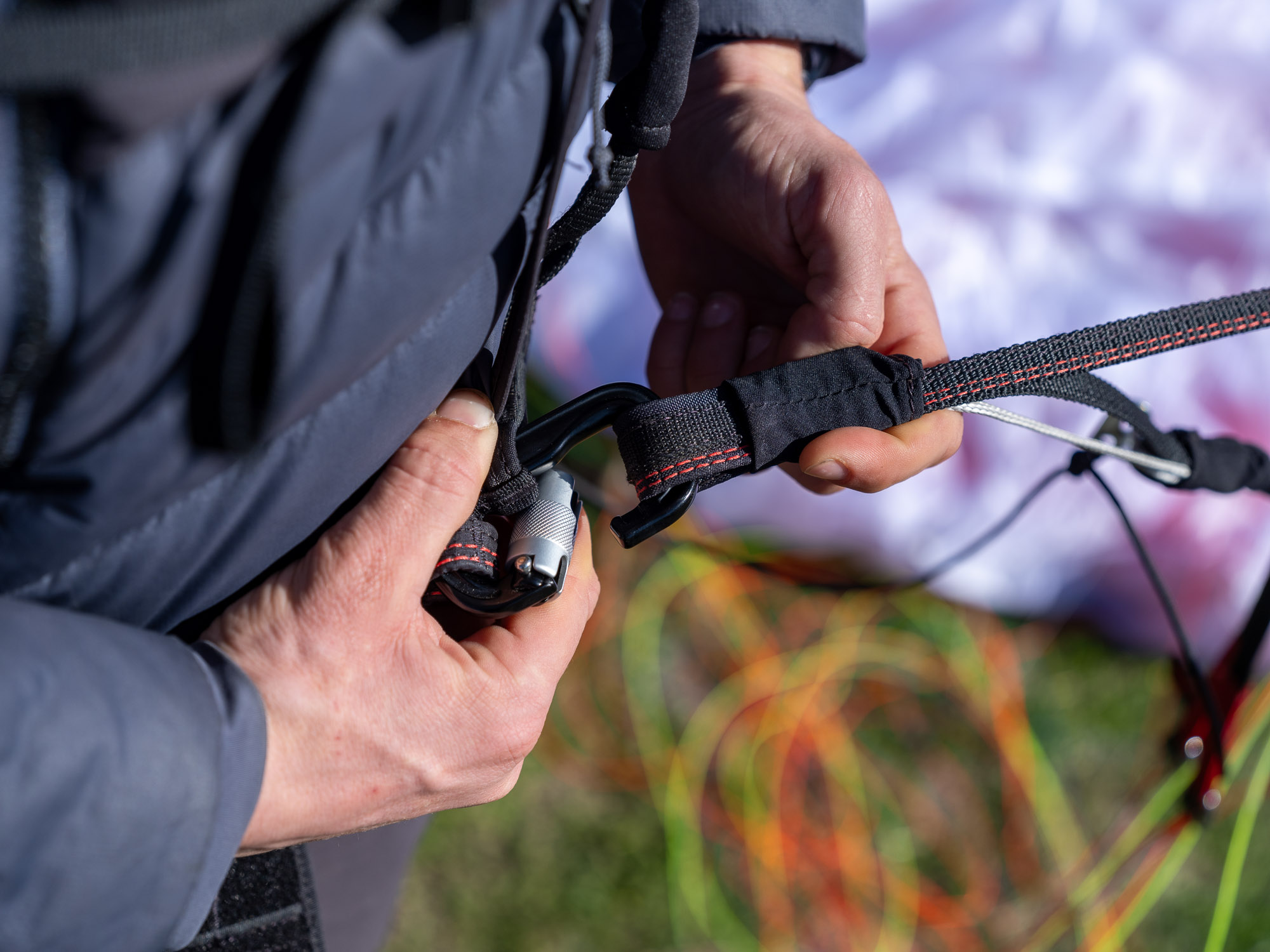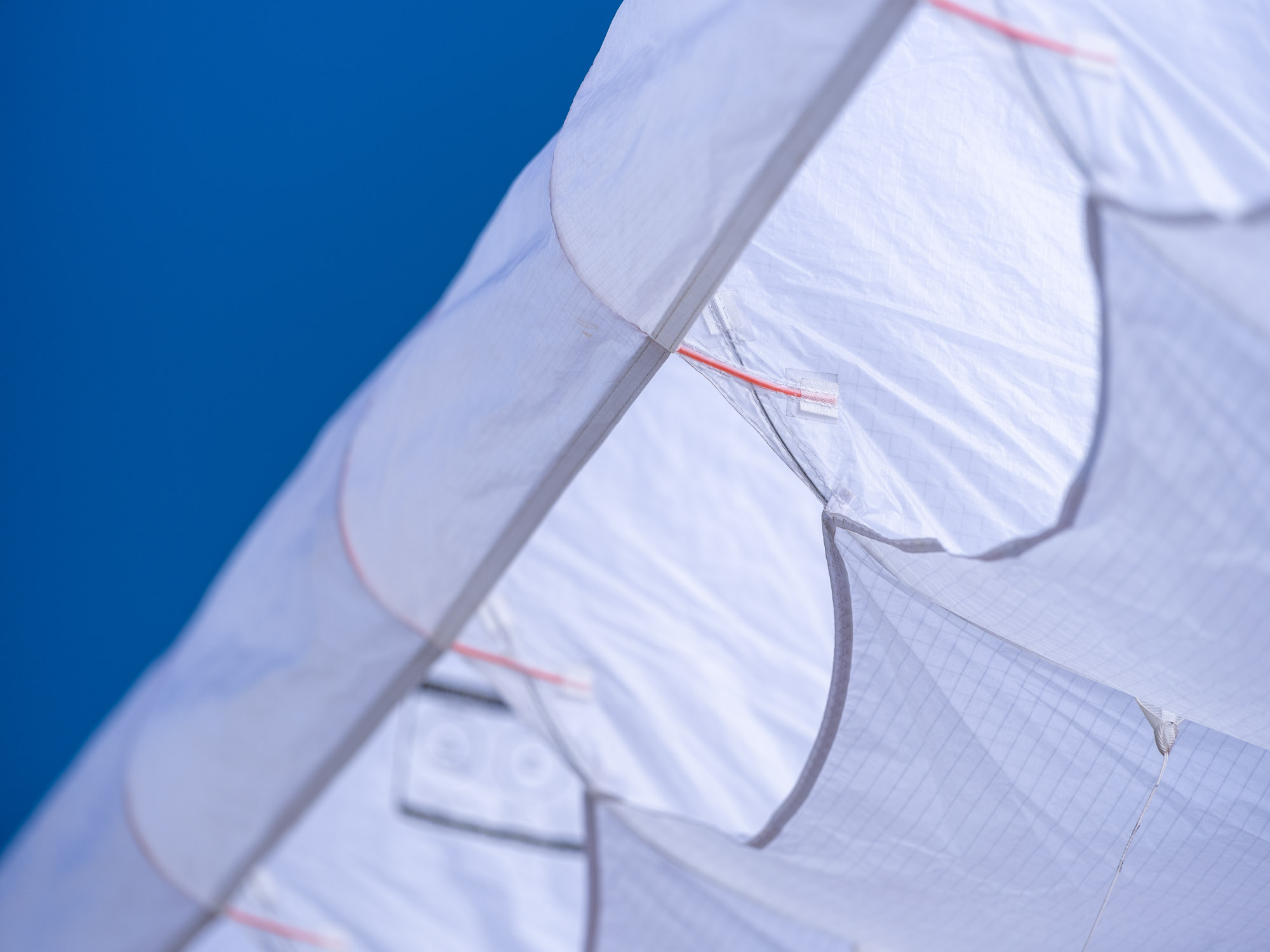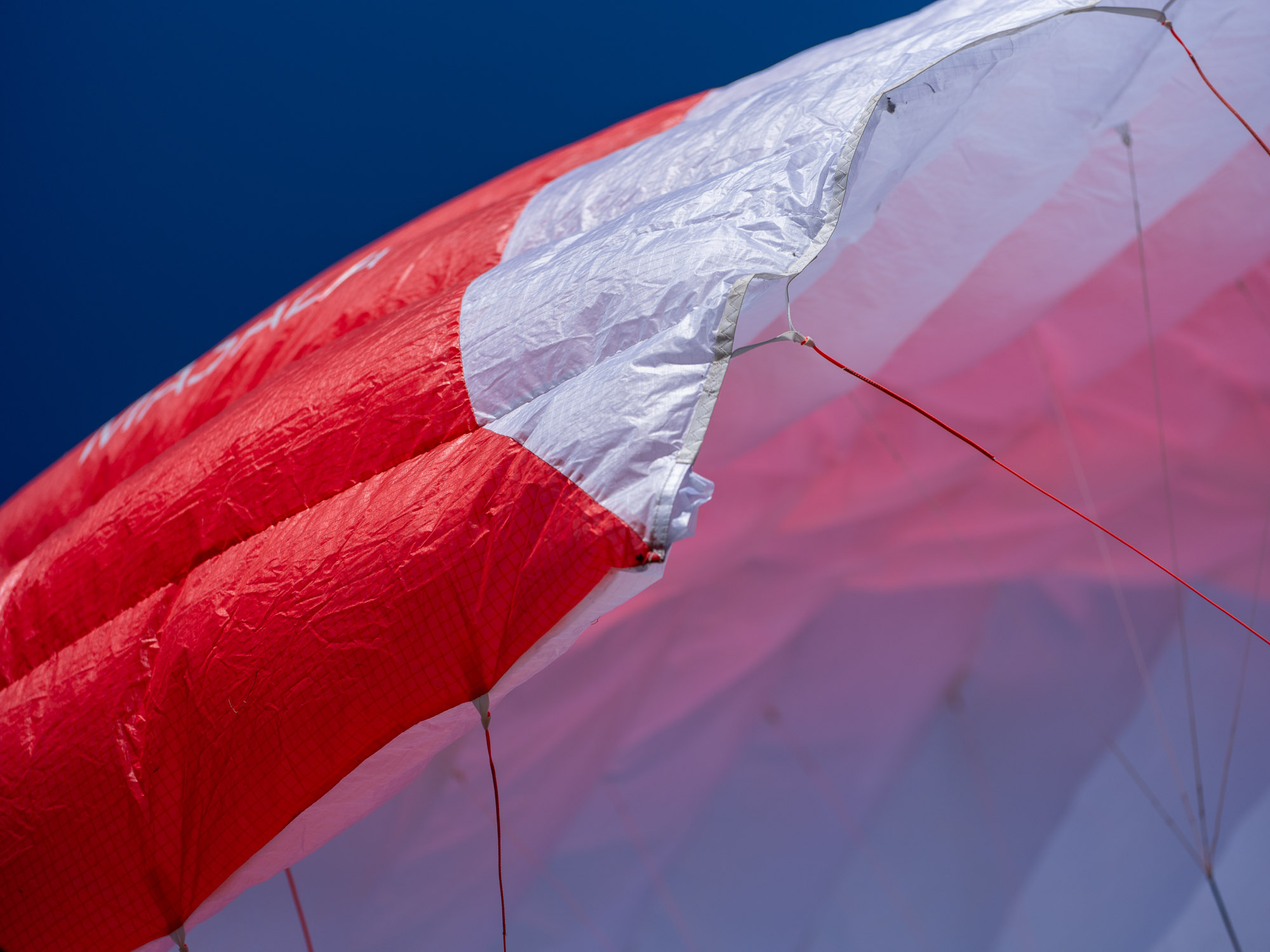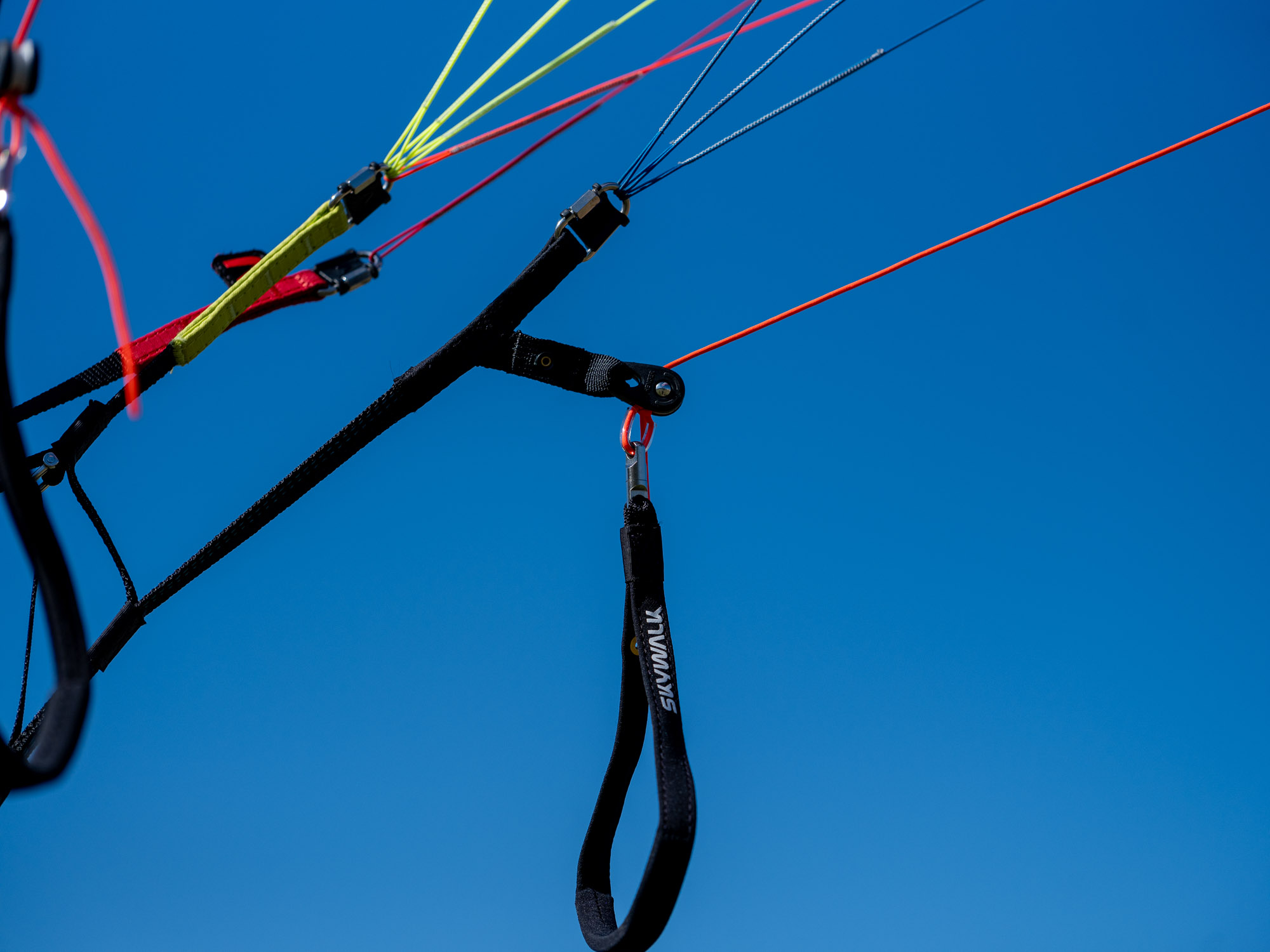More than just the beginning!
The MASALA4 is the perfect choice for every paragliding beginner and pilots who value simple, lightweight, and compact equipment. From the first Hike&Fly experience to flying trips and the initial XC-flights – the MASALA4 is designed to grow with you. It is easy and intuitive to fly, allowing you to quickly gain confidence, accumulate many new experiences while always staying on the safe side.
The complex design and lightweight construction give the MASALA4 a significant advantage on the ground and in the air. As one of the lightest paragliders in our lightweight range, it can be packed very small, making it the perfect companion for traveling and Hike&Fly tours. In the air, it impresses with pleasant damping and playful handling, creating a unity between you, the wing, and the surrounding air.
In short, with the MASALA4 by your side, you enjoy lightness, easy handling, and intuitive flight feeling, combined with unparalleled safety and pure flying fun.
The MASALA4 is more than just the beginning – it is the start of a lifelong passion and a journey of endless discoveries.
The MASALA4 is more than just the beginning – it is the start of a lifelong passion and a journey of endless discoveries.
HOW DOES THE MASALA FLY?
The preparation for take-off is made particularly easy thanks to the clearly arranged risers with color-coded seams that immediately indicate if the risers are twisted, as well as the user-friendly line mix. During the launch phase, the MASALA4 rises homogeneously and reliably over the pilot, the glider corrects itself almost automatically. Whether you are taking off for the first time or are an experienced Hike&Fly pilot, with the MASALA4, take-offs are as effortless and safe as never before, even in the most challenging terrains.
In the air, the glider instills you confidence from the very first beginning to its pleasant roll damping and playful handling. The flight feeling is very intuitive. With the high safety reserves, you are secure even in turbulence and can concentrate on your surroundings in the air right from the start.
For those who love speed and dynamics, it is recommended to fly at the top end of the weight range. Here, the MASALA4 unleashes its full power and flies significantly more dynamically – fun is guaranteed! However, be warned: even though the MASALA4 has an A-rating across the complete weight range, you will be flying much too fast for your instructor’s comfort if you operate in the extended weight range.

JET FLAPS
Our JET FLAPS extend the green arc as you approach the stall point, which substantially increases safety and also improves climb performance.

SMART LINK SYSTEM
Color coded seams on the risers to ensure that the risers are connected correctly and without being twisted. red = left, blue = right

RIGID FOIL
Nylon and Nitinol wires keep the leading edge and the profile in shape and ensure a more constant ram air pressure. Advantages: better take-off behavior and more performance.

C-WIRES
Nylon wires sewn into the glider over the anchor points of the C-level lines. Advantages: better load distribution, reduced drag, more performance.

SHARK NOSE
Together with a corresponding wing design, the shark nose technology improves pressure distribution in the canopy substantially. Advantages: much more solid flying feeling and substantial performance gain, especially when gliding on bar.

3D-SHAPING
A precise calculation of the leading edge geometry and the installation of an additional strip of fabric reduce wrinkling in this sensitive part of the glider. Advantages: exact wing shape, more performance.

MINI RIBS
Doubling the number of cells at the trailing edge increases its shape stability substantially. Advantage: fewer vortices improve the aerodynamics and with it the performance.

SAND RELEASE SYSTEM 2.0
Porous openings of the profile ribs at the trailing edge ensure that sand and dirt in the glider are automatically guided to the wingtip where they can trickle out. This helps preserve the material and relieves the trailing edge.
| Size | 70+ | 80+ | 95+ | 105+ | 120 |
| Cell number | 38 | 38 | 38 | 38 | 38 |
| Area flat (m²) | 19.98 | 22.46 | 25.62 | 27.28 | 29.00 |
| Area projected (m²) | 17.16 | 19.29 | 22.01 | 23.43 | 24.91 |
| Wingspan flat (m) | 9.79 | 10.38 | 11.09 | 11.44 | 11.80 |
| Wingspan projected (m) | 7.86 | 8.33 | 8.90 | 9.18 | 9.47 |
| Aspect ratio flat | 4.80 | 4.80 | 4.80 | 4.80 | 4.80 |
| Aspect ratio projected | 3.60 | 3.60 | 3.60 | 3.60 | 3.60 |
| min. profile depth (cm) | 60 | 63.6 | 68 | 70.1 | 72.3 |
| max. profile depth (cm) | 254 | 269 | 288 | 297 | 306 |
| Weight (kg) | 2.8 | 3.1 | 3.35 | 3.5 | 3.7 |
| Take-off weight, certified (kg) | 55-80 | 60-90 | 75-105 | 85-115 | 95-120 |
| Take-off weight, recommended (kg) | 55-70 | 60-80 | 75-95 | 85-105 | 95-120 |
| Homologation | LTF/EN A | LTF/EN A | LTF/EN A | LTF/EN A | LTF/EN A |
| Upper sail | Porcher Skytex 38g / Skytex 27g double coated |
| Lower sail | Porcher Skytex 27g double coated |
| Ribs | Porcher Skytex 27g hard |
| Main lines | Liros PPSLS 180/125 |
| Middle lines | Liros PPSLS 125, DSL 70 |
| Top lines | Liros DC 60 |
| Brake lines | Liros DFLP 200/32, DSL 70 |
| Risers | Güth & Wolf 12mm webbing |
Why is the MASALA4 particularly suitable for Hike&Fly?
- The lightweight construction reduces both, weight and packing size, making it perfectly suited for ascents on foot.
- Due to its uncomplicated handling on the ground, preparation for take-off is simple even in challenging terrain.
- The reliable launch characteristics allow stress-free take-offs, even on short, difficult launch sites.
- The easy flight characteristics and high safety reserves ensure safe flights in alpine terrain, which is often challenging due to varying wind conditions.
What is the Smart Link System and how does it work?
The Smart-Link system is a feature where each riser has a colored, continuous seam running from the suspension loop up to the C-riser. The red seam indicates the left side, and the blue seam indicates the right side. This ensures that the risers are attached on the correct side. Additionally, it allows for immediate identification if a riser is twisted. These same color-coded seams are also present on the new skywalk harnesses, thereby further enhancing safety.
What should I consider when handling a lightweight glider?
Lightweight fabrics are thinner than conventional paragliding fabrics and therefore less resistant to mechanical stress. This means that when laying out the glider, you should be cautious of sharp objects, stones, bushes, and avoid any unnecessary contact with the ground. By adhering to these precautions, you will enjoy a lightweight glider just as long as you would with a conventional paraglider.
When should I choose a MASALA4 with an extended weight range?
If you prefer to fly faster and more dynamically, choose a size in the extended weight range. The increased wing loading makes the MASALA4 more dynamic, faster, and turns it into a real fun machine. However, note that although the MASALA4 has received a certification with LTF/EN A in the extended weight range, we advise against using it for training purposes due to its increased dynamics. In the recommended weight range, the MASALA4 is, however, perfectly suitable for training purposes.
How do I calculate my take-off weight?
Take-off weight is calculated by adding the weight of the pilot including clothes to the weight of the equipment. The equipment consists of the harness, the reserve chute, the paraglider itself, and any flight instruments and other baggage you may carry (e.g. rucksack, etc.).
What are the glide ratio (L/D), trim and maximum speeds?
Generally, we do not publish performance data, as releasing such information would be considered unreliable for the following reasons:
1. The difference between aerodynamically favorable and unfavorable harnesses and sitting positions can be as much as a whole L/D number.
2. Performance increases with the size of the glider. A larger glider always performs better than the same glider in a smaller size.
3. In paragliding, there is no standardized procedure for measuring performance data. For example, speed varies with altitude and the associated different air pressure, but also with the total weight of the system.
Why shouldn’t I navigate the paraglider over the C-level?
Unlike gliders with two line levels, where pulling the rear risers changes the angle of attack, doing the same on a glider with C-levels causes the profile to deform. This results in a crease forming between levels, which makes the glider more susceptible to collapses. In an emergency, control deflections of several centimeters are possible.
Is it OK for me to shorten the brake lines on my skywalk paraglider?
Changing the length of the brake lines can have a negative effect on the flying characteristics and extreme flight behavior. The paraglider needs a little more lead when flying on speed bar, otherwise the glider could be braked unintentionally, leading to a loss of performance. When performing extreme flying maneuvers, shortening the brake lines too much can cause complications during recovery from collapses, parachutal stall, etc.
Do the nylon wires in the glider need any special attention or packing method?
Our nylon wires are flexible and kink resistant, so they won’t break under normal circumstances. But due to the packing volume it is a good idea to lay the Rigid Foils in the leading on top of each other on both sides.
What are JET FLAPS and how do they work?
JET FLAPS are a so-called split flap, like those on large airplanes. When the glider is braked, the airflow is routed through the glider, restoring smooth airflow. This extends brake line travel and softens the stall behavior.
Which advantages do the JET FLAPS on my skywalk glider offer me?
Lower flyable minimum airspeed. The speed range is wider and easier to control. The pilot has more time to react when flying near the stall point.
Your MASALA4 package
-
- 1x Inner bag
- 1x Compression strap
- 1x Riser bag
- 1x BASIC GUIDE
- 1x Bandana
- 1x Sticker set
- 1x Self-adhesive repair patch


